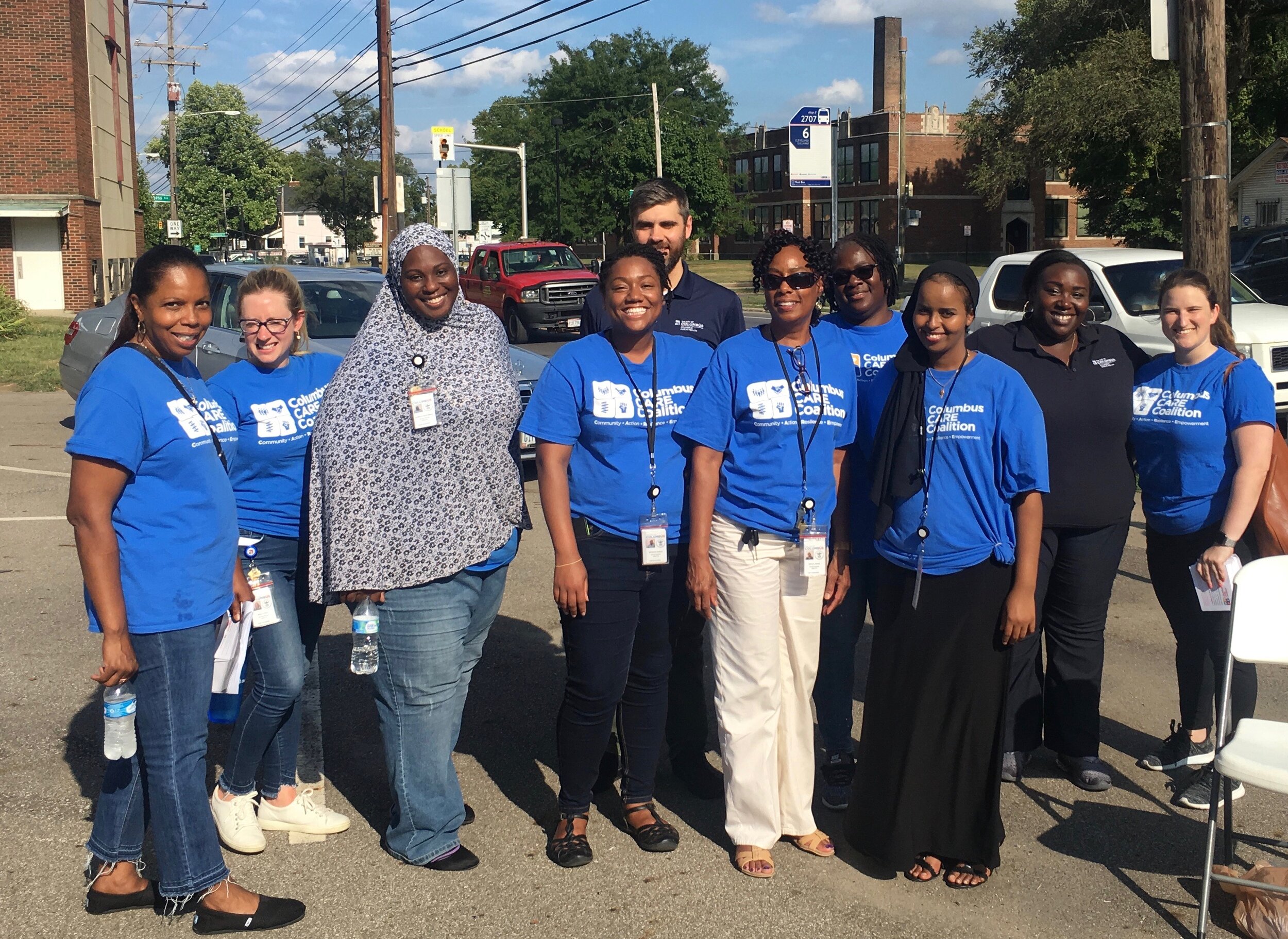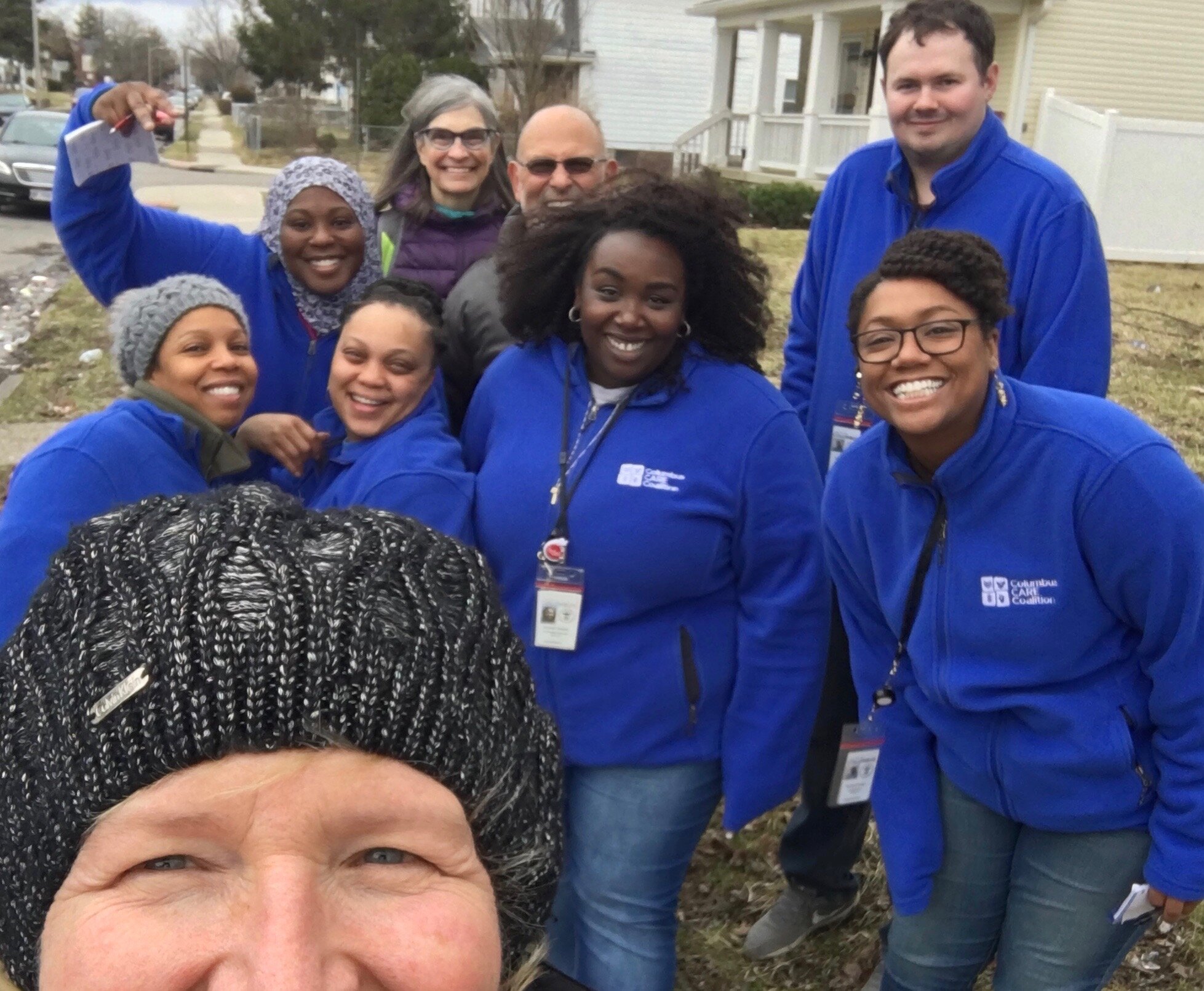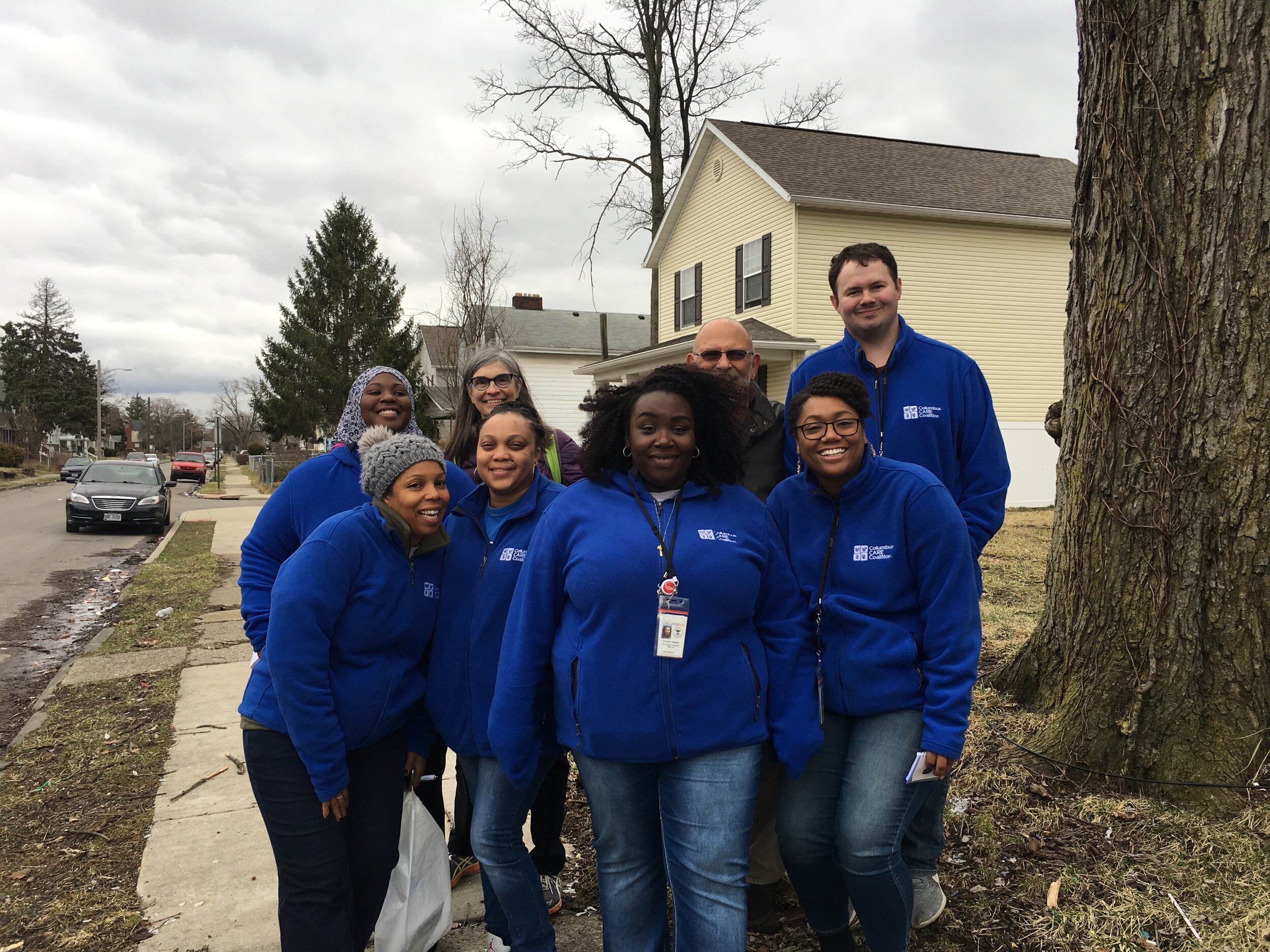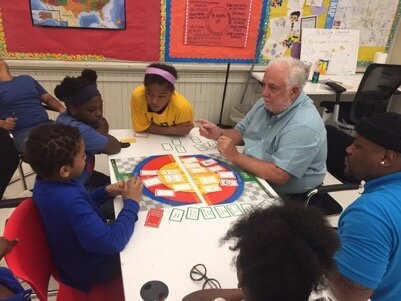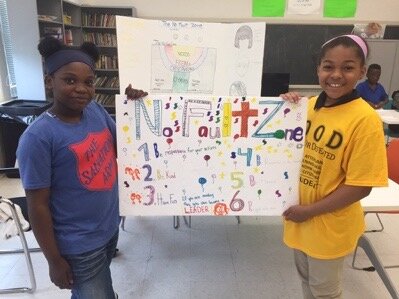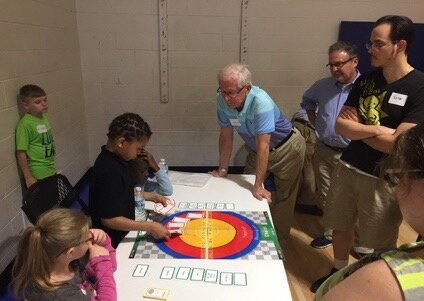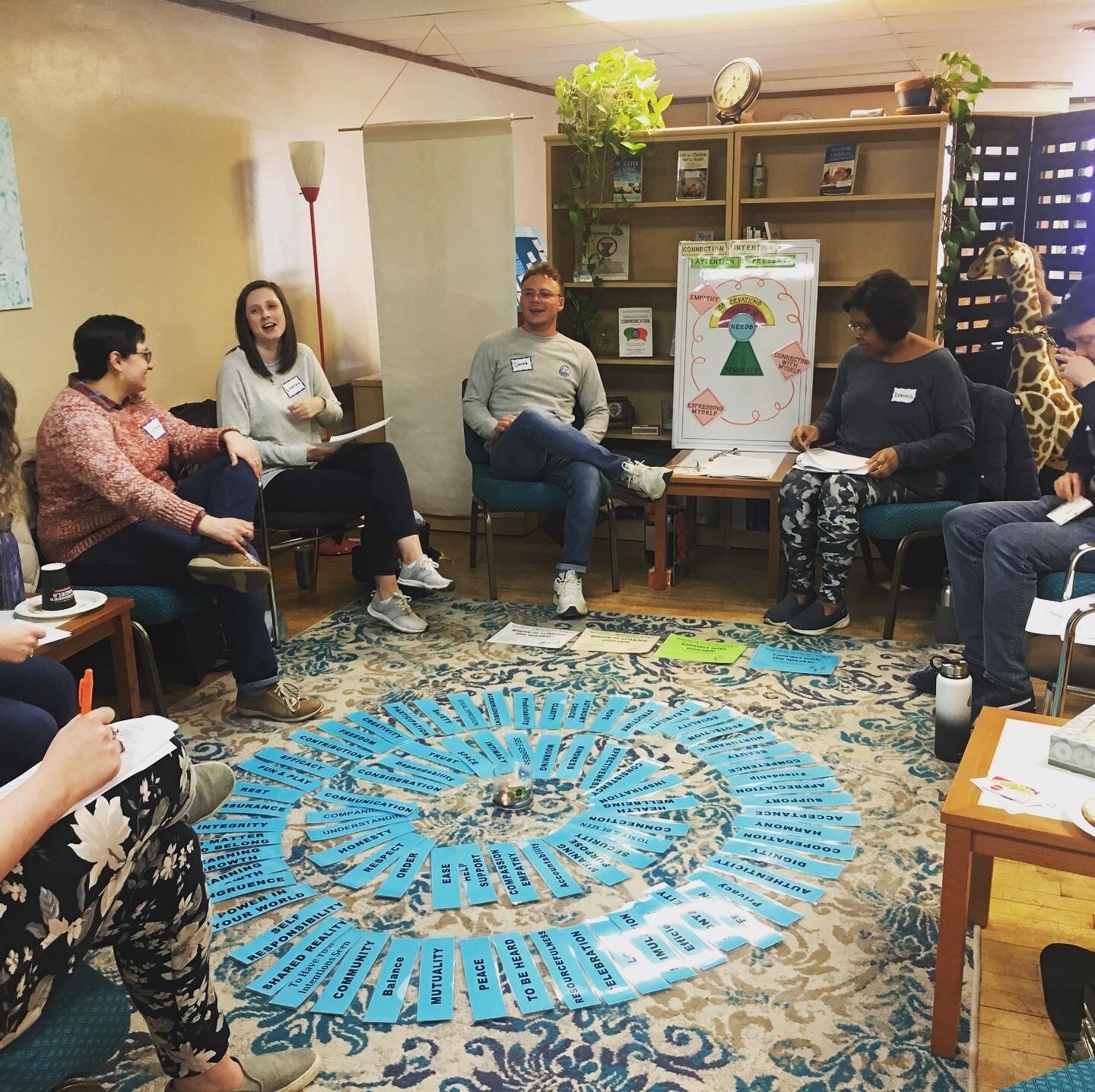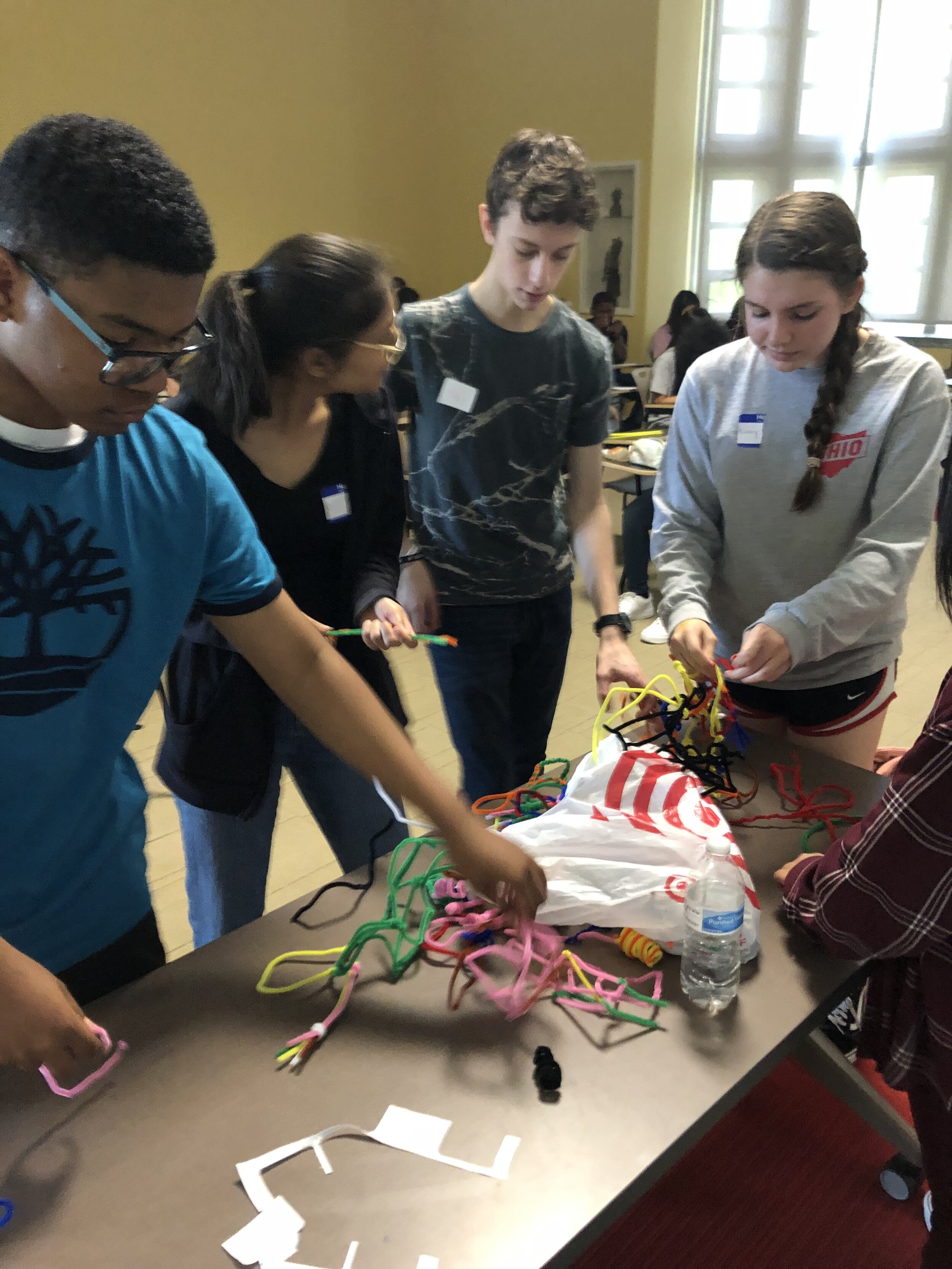Community Member Spotlight: Catherine Murray
Catherine Murray has owned and operated Catherine Murray Photo for a little over 16 years. She works with companies to create imagery for advertising, such as product packaging, catalogs, billboards, banner ads and annual reports. Catherine went to her first NVC workshop in 2018 and joined a practice group that fall in hopes of learning communication skills to handle conflict within her business and personal relationships, as well as address the increasing political divide.
Catherine Murray
I’ve been a commercial photographer, running my own photography business for the last 16 years. I work with companies to create imagery for advertising, such as product packaging, catalogs, billboards, banner ads and annual reports. I collaborate with clients to assess the needs and goals of each project. Are they looking to sell a specific product, gain brand awareness or update their design? Each photo shoot is unique and exciting.
I always knew I wanted to be a photographer, but it took me a while to decide what I most wanted to photograph. My first job was at a restaurant. I loved working with food so much, it was hard to leave. Becoming a food photographer combined the best of both worlds. Food is an infinitely fascinating subject. Growing, harvesting, cooking, baking, eating and sharing...I find I can connect with anyone over their love, or hate, of food.
I really enjoy the variety of work my job provides. Like many small business owners, I have a wide range of day-to-day tasks—idea creator, producer, equipment manager, lighting expert, product tester, stylist, shopper, accountant, hiring manager, writer, director, editor...it's rare for me to feel bored. The flip side is it's quite challenging to keep a balance between work and home, and between busy times and slow times. There are a lot of unknowns from one day to the next.
Weeks of planning go into a one-day photo shoot. There's a general level of stress for everyone on set. I’ve found NVC to be immensely helpful in these high-stakes moments. For example, a client wants to make a change that will likely cause the shoot to run late. In the past, I might've gotten defensive and kept my feelings to myself, leading to resentment. Or I might've tried talking them out of wanting to make the change. Now, I look for solutions to cover everyone's needs.
When I first heard about NVC, I was intrigued. A client of mine had attended a weekend workshop with his wife and had shared with me how transformational it was. I'm a highly sensitive person who seeks to understand the feelings of others. I worried the support I offered to others when they were going through tough times wasn't effective on the receiving end, no matter how good my intentions were. At the same time, I found it difficult to express my own feelings succinctly, especially in business settings. I was frustrated by the lack of words to explain what I was feeling in a way others could hear.
I went to my first NVC workshop in 2018 and joined a practice group that fall. I wanted to learn communication skills to handle conflict within my business and personal relationships, as well as address the increasing political divide.
The biggest change for me has been internal. I thought communication was soley an external action--me talking to another person. Yet my inner dialog was a loud, never-ending internal argument. I was either imagining hypothetical conversations of what the other person might think/say, or I would argue with myself, usually between two conflicting needs. For example, “I feel tired, but I also feel obligated to finish a project because I value honoring deadlines.” Now I can sort out those spiraling, repetitive thoughts into observations, feelings, needs, requests of myself and requests of others.
NVC has helped me navigate some of my toughest relationships. I'm now able to separate my own feelings from the feelings of others. Problem solving with clients has become more efficient and effective. I can sort out what drives me to make decisions and find ways to align my decisions with the needs of everyone involved. I feel more calm and hopeful when sharing feelings within romantic relationships. I can see that others aren't trying to be hurtful. I have tools to dig deeper and figure out what we're both needing to move forward together.
I'm grateful to all the individuals who have devoted time to sharing NVC with others. I hope to give back to the CCCO community as I continue to grow in my practice.
Community Member Spotlight: Don Buckingham Sr.
Don Buckingham, Sr. is one of CCCO’s newest board members! He helps the board streamline our organization’s core values, goals and mission into actionable items. Don remains curious and uses compassionate communication in all personal and professional interactions; especially when listening with an empathetic ear and providing reflection and/or feedback. He defines the use of NVC as a spiritual practice for him — helping foster empathetic connection and honest communication with others.
Don Buckingham, Sr.
donabuckingham@gmail.com
Connect with Don on LinkedIn
Don Buckingham, Sr. is one of CCCO’s newest board members! He helps the board streamline our organization’s core values, goals and mission into actionable items. Don remains curious and uses compassionate communication in all personal and professional interactions; especially when listening with an empathetic ear and providing reflection and/or feedback. He defines the use of NVC as a spiritual practice for him — helping foster empathetic connection and honest communication with others.
In his role at Nationwide Children’s Hospital, Don is a Senior Quality Improvement / Business Operations Excellence professional, utilizing Lean, Six Sigma, Statistical Quality Control, and Constraints Management methodologies in healthcare, supply chain, and business service environments. He has years of success designing and measuring effective work systems at all organizational levels - executive, management, front line and support services.
Don achieves sustainable results through deep respect for people and devotion to continuous quality improvement. Currently, he consults with pediatric clinical service line leadership and staff to develop service applications with a rigorous discipline for process waste removal, variation reduction and work simplification - all with a view toward optimal safety, quality, productivity, service delivery, and contribution margin.
“Coaching teams of medical professionals in the improvement of healthcare delivery is most rewarding and always challenging”
Don makes a difference every day by successfully integrating 1) clinical science; with 2) quality improvement science; and 3) operations management science for evidence based outcomes / service delivery excellence. Don is most inspired by St. Francis of Assisi. He finds peace and joy in the following quote from St. Francis; “You have been called to heal wounds; to unite what has fallen apart; and to bring home those who have lost their way.”
Community Member Spotlight: Marian Stuckey
Marian Stuckey is Section Chief of Neighborhood Social Services for Columbus Public Health and leads the Columbus CARE Coalition and the Neighborhood Social Work Programs. She brings dozens of organizations together in partnership to offer care and provide essentials services to families in need in multiple neighborhoods throughout Columbus.
Marian Stuckey
It’s delightful for me to have the opportunity to shine a light this month on a dear friend and colleague, Marian Stuckey who is making a huge difference through her work with the Columbus Care Coalition, a branch within Columbus Public Health. Marian brings dozens of organizations together in partnership to offer care and provide essentials services to families in need in multiple neighborhoods throughout Columbus.
Please enjoy learning more about Marian as she answers questions about her passion for her work and service to our community!
- Susanna Warren
What is the name of your organization and what is your job title or primary role there?
I currently work for Columbus Public Health. Through CPH, I lead the Columbus CARE Coalition and the Neighborhood Social Work Programs. My job title is Section Chief of Neighborhood Social Services–the umbrella section in which both programs are located.
What originally got you started doing this work? Was it always your plan or did something happen to give you the opportunity to do this work?
I got my start in the field of Social Work while I was working at Job and Family Services. It was there I learned that I wanted to provide more wrap around services–I was in a role where I had to sanction or suspend public benefits and I knew that was not something I wanted to continue to do because I have come to learn there is so much beneath the surface–I wanted to be in a supportive role to help people move through their barriers. I didn’t initially know that I was going to become a Social Worker, actually had intentions of being a journalist. Things shifted for me after graduating college and I haven’t looked back since!
What part of your role do you enjoy the most and what do you find most challenging?
When I’m able to genuinely help other people. This can be a slight shift in their thinking patterns, advocating for themselves, or even being that source of inspiration and encouragement. My heart is uplifted to see people being able to live in ways that are authentic. I enjoy getting to see other people working in their passion as well and the glow that you can see from the individual when they are fulfilled.
We live in a world where there are so many barriers that can’t always easily be navigated. Barriers that prohibit people from thriving. Trying to manage the frustration and slowness of change at times is a challenge.
I strongly believe in making sure to utilize power with dynamics with others. Giving room to honor choices and preferences is vital to creating environments where people feel valued and heard.
Would you please describe the people you serve?
I work in a multifaceted role. I work with the community, with partner organizations with the CARE Coalition which includes over 200 local agency partners who are tuned into the work of trauma responsiveness.
The Coalition has 3 focus areas: Linden, Hilltop, and Southside of Columbus. We offer a variety of services within the community including: post homicide support, mental wellness events, and community based support groups to name some.
Who or what inspires you and how has it impacted your work?
My family is a huge source of inspiration for me and always has been. When I think of the struggles, grief, and spirit of overcoming that I’ve seen from my family I’m always encouraged and ready to push forward.
Would you share how learning Nonviolent Communication has helped you?
NVC has helped me be intentional about gaining a deeper understanding of the needs and feelings of both myself and others that I encounter.
Please share a favorite experience that describes how your work supports the people you serve.
What I have found is you never know when someone might be in a space where they need additional support. Doing the door to door work after homicides in neighborhoods–there are times we hear back from residents because they’ve held on to our material. It’s great to know that in times of need we can be a readily available source of support.
Community Member Spotlight: Tom Carlisi
Tom is one of the Founding members of CCCO. He served as Vice Chair of the original CCCO Steering Committee in 2005, which helped introduce NVC to the central Ohio community, and planned for NVC Conferences with Marshall Rosenberg, PhD, and Founder of NVC. Tom also served on the CCCO Board and Advisory Council, and he has conducted or co-presented several NVC Training Workshops, sponsored by CCCO. Additionally, Tom is a Certified Trainer for the Center for Nonviolent Communication.
Tom Carlisi
carlisiandassociates@gmail.com
Tom is one of the Founding members of CCCO. He served as Vice Chair of the original CCCO Steering Committee in 2005, which helped introduce NVC to the central Ohio community, and planned for NVC Conferences with Marshall Rosenberg, PhD, and Founder of NVC. Tom also served on the CCCO Board and Advisory Council, and he has conducted or co-presented several NVC Training Workshops, sponsored by CCCO. Additionally, Tom is a Certified Trainer for the Center for Nonviolent Communication.
In his professional work, Tom is the CEO of Carlisi and Associates, LLC. He specializes in Conflict Prevention/Resolution. He has worked with “at risk” youth and families for over 45 years. Tom also works as a CNVC Coach & Trainer with businesses, schools, and community organizations. He has integrated NVC into his professional work, ranging from central Ohio to North America, Europe, Africa, and Asia. This article will feature some of Tom’s work in Ohio.
One of my passions is introducing Nonviolent Communication (NVC) to youth. I am currently “in discussions" with several local youth organizations to offer NVC training workshops with their staff, which will integrate NVC into their respective after-school programs. One example is YMCA of Central Ohio. I am also working with the Ohio Council of Churches (OCC), as a Social Justice committee member. I am helping OCC to plan an online event this summer, which will feature Youth & the Impact of COVID-19. Social Justice themes will also be offered, in time, and plans are to introduce NVC into the programs.
One of my favorite projects was an 8-week program called “Young Peacebuilders”. I introduced NVC to about 15 youth, ages 9-12 years, at the South Side Boys & Girls Club (at Reeb Avenue Center). Each session was about 40 minutes. During the first evening, I asked the group, “What goes on around here that you don’t like?” Immediately several participants responded, “We bully each other […] We are selfish and won’t share our video games […] When we do something wrong, we try to lie ourselves out of it.” I then shared the NVC process, using the “No Fault Zone” Game Board & Cards (developed by Victoria Kindle-Hodson and Sura Hart, NVC Trainers). I invited the group to develop a Compassionate Club, and said to them, “It’s your club, you need to decide what agreements you are going to create and live by. What is important to you?”
What happened next surprised me, as they immediately responded by saying, “First, we need to be more respectful to staff […] We need to share […] We need to fess up when we do something wrong.” And my favorite response, “We need to be kind to each other.” I recalled something that Marshall Rosenburg shared in his trainings: Compassionate Giving is our natural state. These youth were demonstrating that trait, with their authentic, honest, and compassionate sharing.
Over the next 8 weeks, the youth group learned NVC, practiced with each other, and prepared to host a Peacebuilder Special Event, as part of their Service-Learning project. They also shared NVC with adult Rotary club members, their families, and local residents. As our time together came to an end, we had a celebration party. One young girl said, “Mr. Tom, I think if everyone took this course that we just did, we would have a more peaceful world.” I smiled at the young girl and asked her how old she was. She answered, “10”. I then asked if I cold quote her and she said “Yes!”
I have shared that story with people across in the US, Virgin Islands, Europe, Africa, and Asia. Through the early beginnings in CCCO, I have had the privilege (with my fellow Peacebuilders) of carrying out the mission of CCCO…and…to foster, as the young girl said, “a more peaceful world.”
Community Member Spotlight: Derek Burtch
Derek uses NVC in his classroom and the nonprofit he co-founded, Erase The Space.
Erase The Space & Derek Burtch
derek@erasethespace.org
erasethespace.org
Erase the Space has partnered with CCCO since we started the program. Our aim is to provide opportunities for young people to engage in civic discourse across difference. We know that the tough conversations are even tougher to have when engaging with someone who has different life experience. Often, the conversations don't go the way we expect because of the way we view the situation—through our lens. That is why NVC is such a great tool for our students when learning to collaborate with someone in a different district and a different part of the metro area. We knew that in order for our students to practice empathy, teachers should be doing the same thing. We ask a lot of the teachers who participate in our program. Integrating discourse activities into their curriculum isn't always easy. Living with students in the tension of communication inherent in some of the issues brought up during Erase the Space exchanges is also very difficult. Nonviolent communication, especially the basics training, provides teachers with language and structure to what most of them do in class already—empathize with their students. Our hope is that with the framework of NVC, our teachers can feel confident guiding their students through the tension of civic discourse with to collaboration and connection.
In late February, Erase the Space gathered our teachers to learn the basics of nonviolent communication with Susanna Warren. It was a cold winter day, but how grateful we all were for it! The teachers learned from Susanna and engaged in activities surrounding the work in their classrooms. The teachers—from five different districts around central Ohio—caught on quickly and discovered uses for NVC with their students, and some discovered that they already operate from a place of empathy and were excited to have such precise and intentional language behind their teaching practice. One teacher told me, "I bought all the NVC books, and I'm presenting on the concept at our district professional development next week. I love it and am all in." We all know it works, but it's always great to hear about the positive ways it impacts our teachers. Erase the Space and CCCO will continue to partner in the effort of bringing NVC to different educational communities.
Erase the Space: An initiative to get kids talking across difference
I experienced an amazing event today at the Columbus College of Art Design (CCAD), the hosts of an Erase the Space event. Erase the Space is a civil program that brings high school students together from different communities and schools in the Columbus area to talk about common challenges students have, through the lens of civil discourse.
May 28, 2018
I experienced an amazing event today at the Columbus College of Art Design (CCAD), the hosts of an Erase the Space event. Erase the Space is a civil program that brings high school students together from different communities and schools in the Columbus area to talk about common challenges students have, through the lens of civil discourse.
Amelia and Derek, teachers from South High School and Liberty High School came up with this innovative idea through their Master’s degree fellowship at the Bread Loaf School of English. Little did they know that the idea they conceived would draw the attention and support of the Columbus Foundation, teachers from across Columbus and the faculty and graduate students from CCAD.
When Derek first reached out to Compassionate Communication Center of Ohio (CCCO) a few months ago, he shared that he was deeply inspired by the work of Compassionate Nonviolent Communication (NVC). He had been reading and watching videos about the work online. He told me he wanted the principles and practices of NVC to be a central part of supporting students in having conversations across social, economic and cultural differences. He imagined NVC could offer much-needed core competencies on empathic listening, a method of listening in which the other person feels heard, understood and confident to speak honestly from a compassionate stance.
It was interesting to see the commonalities of activities from the structural design teams at CCAD and NVC. The core of both practices is focusing on getting to the heart of the needs. The focus of the morning exercises were diving a little deeper into understanding the other students’ challenges while focusing on needs that motivate their behavior. The afternoon was spent immersed in collaborating and co-creating projects that will increase connections by advocating for equity and inclusion within central Ohio area.
Seeing 50 teens working together toward solutions for social justice issues from many social, economic and diverse backgrounds gives me hope for a world that can work for everyone.
A couple of the projects that really stood out for me were: “A Day in Your Shoes” where students would swap places for a day, following each other’s school schedules; and another is a series of cross-cultural gatherings at Columbus Parks and Recreation, where families can come together for job fairs and offer ideas for business ventures while their kids play at the park. There was a pulse of optimism and hopefulness present as we witnessed the teens from very diverse backgrounds immersed in creative ways of bringing neighbors and communities together.
This Erase the Space event is the grand finale of a year of establishing connections and commonalities, breaking down cultural barriers and diving deeper into challenging issues such as diversity, racism and access to resources that they face regularly and how they can make a difference by being stronger together rather than isolated into one way of thinking.
If you’d like to know more about Erase the Space please view their website at erasethespace.org.
BY:
Susanna Warren, Outreach and Program Director
Compassionate Communication Center of Ohio
Certified trainer with the International Center for Nonviolent Communication
Reflections on Living Compassion Retreat with Robert Gonzales
As I was thinking about Robert Gonzales’s upcoming retreat in Columbus, Ohio, in May 2018, I wondered what the best way would be to describe the retreat and the work of living compassion. Over the past 10 years of knowing and studying with Robert, I haven’t experienced him as a teacher, a guru, mystic or spiritual leader, but as a companion on this journey of discovering how to live life more fully activated and free.
February 19th, 2018
Janine Harris Degitz
As I was thinking about Robert Gonzales’s upcoming retreat in Columbus, Ohio, in May 2018, I wondered what the best way would be to describe the retreat and the work of living compassion. Over the past 10 years of knowing and studying with Robert, I haven’t experienced him as a teacher, a guru, mystic or spiritual leader, but as a companion on this journey of discovering how to live life more fully activated and free.
“To fully empower our place in life, our engagement in life, we must first find, cultivate and strengthen the center from which we engage with life. The center where our values lie, our heart center, the center of our life force energy as it flows through us. When we act from our center, fueled by love, we start to harness a force that is beyond what we’ve known as possible.”
— Robert Gonzales
An image of a spelunking journey down into a cave came to me, with Robert being one of many that shines his light so that we all can more clearly see our internal and thereby external relationship to the world. His commitment to living compassion and sharing what he has learned along the way has had a significant influence on my life. He continues to bring my attention back to an ongoing inquiry: What is my relationship to life? Where is my attention? How do my habitual patterns of living life show up in my body? Do I tend to live from fear and judgement?
Just as we don’t go caving alone and navigate the myriad of difficulties without support. This work of living compassion requires us to enhance our community-building skills, create a variety of support networks and strengthen our embodiment and consciousness to create a lasting impact on our day to day lives.
I don’t know about you, but my own early training in relationships, community-building, communication and compassion (both for self and others) was limited. In fact, our education in North America is steeped with messages of independence, self-consciousness, blame and shame, and right/wrong thinking. We are trained to analyze, label and diagnose, and we are conditioned to disengage from our body’s energy and rely on our thinking brain to solve all of our problems. All of these habits, behaviors and thinking take us away from “what is” in this moment and distract us from feeling the truth of our experiences and seeing our shared common humanity.
Things happen in life, and my experience has been no different than many others. The serious illness of my 5-year-old daughter, the traumatic brain injury of another, my own health crisis. This work of living compassion is the recognition that no matter what is happening in our inner life – whether it be fear, joy, anger, or grief – it is an aliveness that is pointing to something that matters to us in relationship to life itself. As Robert mentions, the illusion of a separate inner and outer life is quite strong in our culture – we are always in relationship to life. There can be no separation.
If you have been wondering if there is another way of engaging in the world during this time of social and political divisiveness that is empowering instead of reactive, this retreat will inspire new skills and consciousness. Robert will offer a variety of exercises on how to recognize when you are stuck in fear, protection and judgement and restore your capacity to choose to engage from a grounded, value-centered place. There will be opportunity to explore and co-create with a community of learners, to strengthen the very muscles we all need to live life more fully activated and free.
Give yourself this time to explore your relationship and engagement in your life through attending the upcoming week-long retreat with Robert Gonzales in May 2018. This retreat will be filled with opportunities to work in dyads, group opening and closing circles, journaling, art expression, movement and silent integration in the natural world.
For more information about the retreat and registration, click here: Compassionate Communication Center of Ohio.
This article was originally published on restorativeliving.org. Reprinted with permission.
About the Author:
Janine Harris Degitz. Janine has been studying Nonviolent Communication (NVC) since 2005 with a focus on Robert Gonzales’s work of Living Compassion. In addition to NVC Janine has been studying conflict resolution, community building, mediation and restorative justice practices for the past 20 + years. She earned a Master’s degree in Restorative Practices from the International Institute for Restorative Practices (IIRP) in Bethlehem, Pennsylvania. Embodiment as her guide, Janine has been deeply influenced and is a facilitator of the work of Philip Shepherd – The Embodied Present Process (TEPP), Marcia Miller – Urban Zen Integrative Therapy (UZIT) and Gunther Hauk – Spikenard Honey Bee Sanctuary. You can find more information about Janine at her website: www.restorativeliving.org
Thoughts on Hate and Charlottesville
The practice of nonviolent communication has never seemed more urgent – or relevant, than it does at the present moment in our history. The reason for this seems to be embodied in the peace practice of the Haudenosaunee , the great Native American federation of tribes. They recognized two really important concepts that we would be wise to try to remember, that all things are interconnected, that the past present and future coexist and that in our hearts, in our passions, and in our perspective, we carry seven generations.
Morning, August 19, 2017
Joe Recchie
“We are a part of everything that is beneath us, above us, and around us. Our past is our present, our present is our future, and our future is seven generations past and present.”
Haudenosaunee Teaching
The practice of nonviolent communication has never seemed more urgent – or relevant, than it does at the present moment in our history. The reason for this seems to be embodied in the peace practice of the Haudenosaunee , the great Native American federation of tribes. They recognized two really important concepts that we would be wise to try to remember, that all things are interconnected, that the past present and future coexist and that in our hearts, in our passions, and in our perspective, we carry seven generations.
The hateful language, actions and violence which erupted in Charlottesville over an already tumultuous societal surface is fully deserving of the outrage and condemnation that it has received. But the practice of nonviolent communication asks each of us to do two things, to examine our own unconscious biases, the stories we tell ourselves, and to see that the hateful behavior we have witnessed is a pathway to the unmet needs of these misled and suffering actors. Yes, the hateful speech is spewing from humans who are suffering and asking for help. They are asking for it in a way that defines violent speech, speech that harms others and creates further suffering for the hate speaker.
The practice of NVC asks us to guess empathetically at the unmet need of the other, in the hope of reducing suffering and encouraging greater compassion in the world. Most of us are but one or two degrees of separation from people filled with hatred of the other. Their unmet needs may be for connection, belonging, respect or safety. In the practice of NVC, we go there, try to help in identifying these unmet needs and address them; at the personal level and at the societal level. It means listening past the hateful language and actions, of leading with compassion and in focusing on concrete actions we can take in the world. It is necessary to be available to address the underlying needs of the hateful actors and the victims of hateful action. In being of service, we are connected and our practice increases our circle of human concern.
Nonviolent communication is a way to peacefully navigate the world we live in. Yet it is not passive. It is a constant call to action, concrete, measurable action, done with the fullest intention of connecting fully with everything that is beneath us, above us and around us.
Joe Recchie serves as a board member for Compassionate Communication Center of Ohio.






